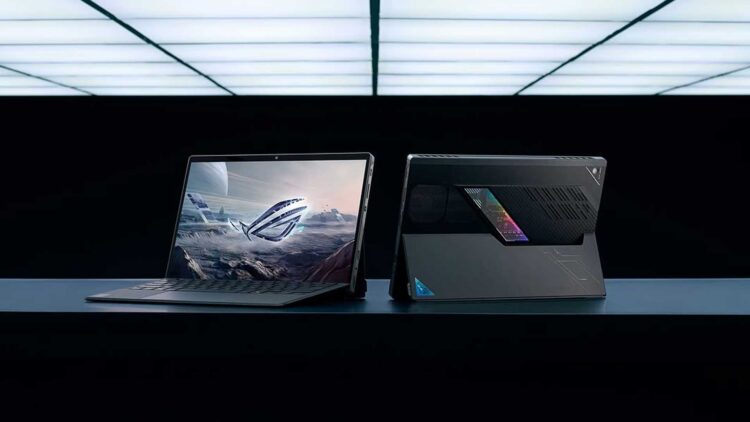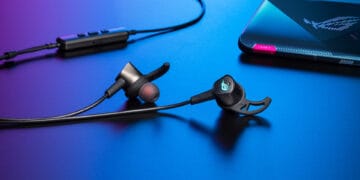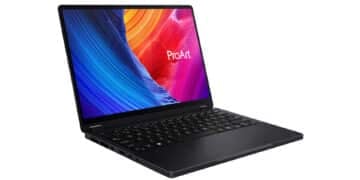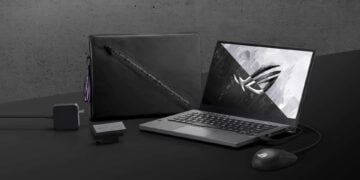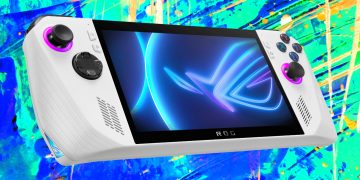ASUS has a wide range of niche devices within their product lineup. This carries through even to its laptop lineup, which offers a variety of form factors if your budget allows. While it may not always be within the grasp of your average user, for power users, creators and gamers, these types of products can be hot sellers. One such product is the ASUS ROG Flow Z13 (2025) GZ302.
Now in its third iteration, the product has been refined over the years. While still offering the latest hardware, it has fine-tuned many features to create the perfect carve-out for the 2-in-1 laptop. Let’s examine what makes the ROG Flow Z13 tick and where there’s room for improvement.
ASUS ROG Flow Z13 (2025) GZ302 Build and Design
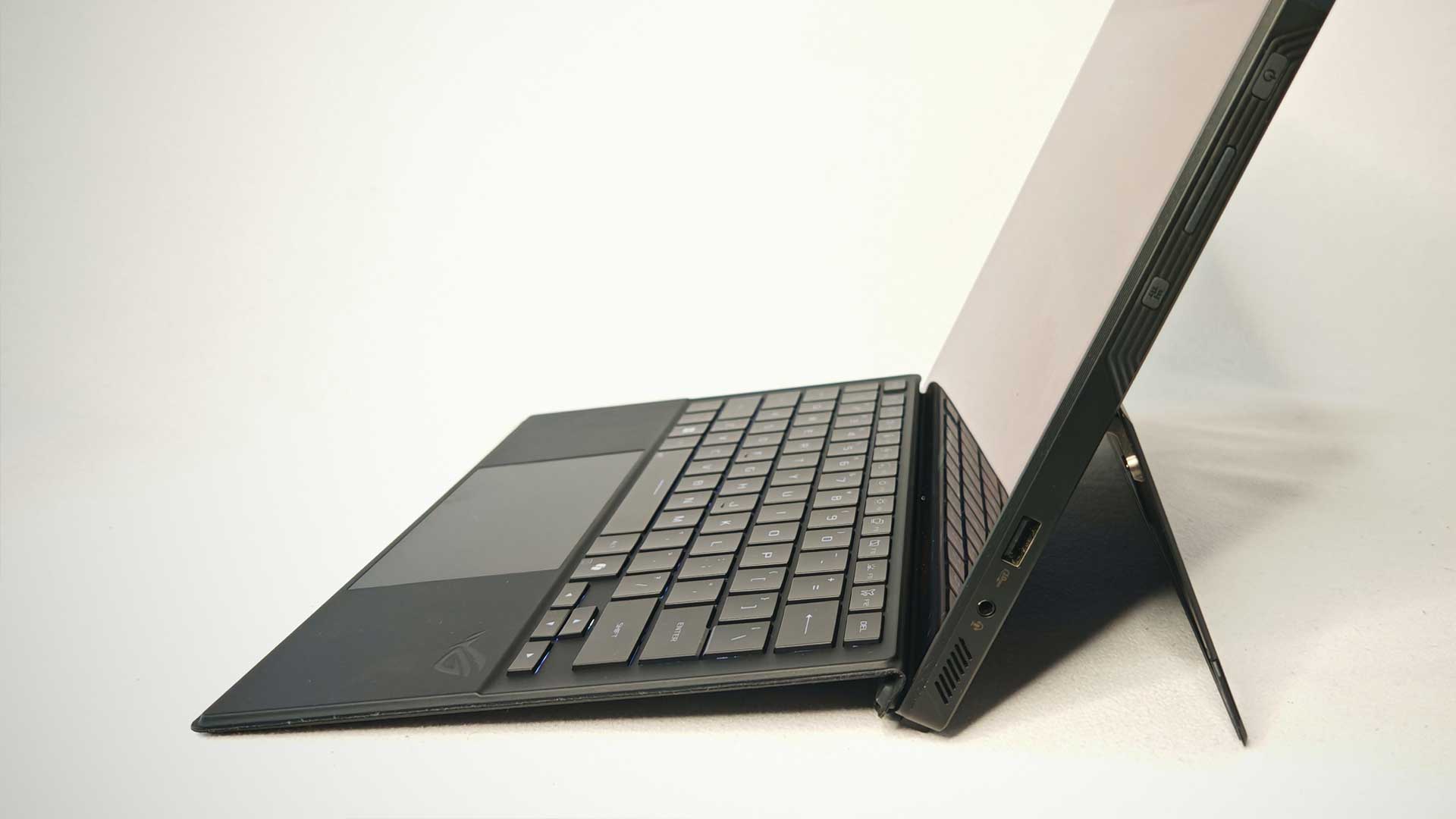
A glance between the 2024 and the new 2025 variants of the ROG Flow Z13 and you won’t notice much change. It is a significant change compared to the first model in 2023, but has only slightly improved on the previous iteration. But we didn’t need a significant refresh of the design, which was almost perfected by the ASUS design team in 2024.
Starting with the specifics, the Flow weighs 1.2KG. This is pretty lightweight in laptop terms, especially in the gaming category. However, considering it’s also a tablet, you question things. After holding 1.2KG in your hands (not on your lap) for an extended period, you’ll feel the strain. When using the device in tablet mode – when drawing using the stylus, for example – I often had to rest it on my lap in some form after a while.
In terms of dimensions, the device has a frame measuring 300x204x13mm. 13mm is relatively thin for a laptop but thick for a conventional tablet. Additionally, this increases to 14.9mm with the keyboard attached (and closed).
Because the keyboard is detachable, it doesn’t form the unit’s base as most laptops do. As a result, to keep the screen upright while in laptop mode, there’s a kickstand on the rear. It works well, and you won’t notice when typing away at your desk, but things change when you switch to work on your lap. The kickstand is relatively thin, which means it can be sharp – not sharp enough to pierce your skin, but enough to be uncomfortable if you’re wearing shorts. There’s not much of an issue when wearing your favourite pair of jeans.
ASUS has thrown in one or two more ports over the previous iterations. The configuration now includes x2 USB Type-C (USB4, DisplayPort 1.4 with power delivery), a single USB Type-A port, an HDMI 2.1 port, a microSD card reader and an audio combo jack to round things off. I know we’re well into the ultrathin era of laptops, especially with the ultrabooks. Still, if you rely mainly on Type-C ports, I’d like an adapter for the Ethernet to be included in the contents. That’s not the case here. Thankfully, I have one lying around, mainly since I often review devices such as this, but when you’re spending a pretty penny on your laptop, you still don’t want to spend anything additional if you’re the consumer. This isn’t an Apple.
It may seem that I’m being quite harsh on the design choices of the ROG Flow Z13, but that’s more constructive feedback than my overall thoughts on it. I enjoy the device’s design approach.
As with many other 2-in-1 devices, leeway is needed to make it work in both forms. ASUS has delivered on both with the Z13. It may seem heavy operating as a tablet, but it’s extremely powerful while offering the best of both worlds. Additionally, ASUS has continued its design trend of cutting out a portion of the rear chassis to show some internal boards, surrounded by some LED lighting, to give it a touch of style. Yes, the team will highlight the larger and more stylised vents for better airflow, a larger touchpad and many other similar points, but that LED cutout does hit the sweet spot on the design front. If only we had a few more ports or an adapter to compensate.
Screen and Display
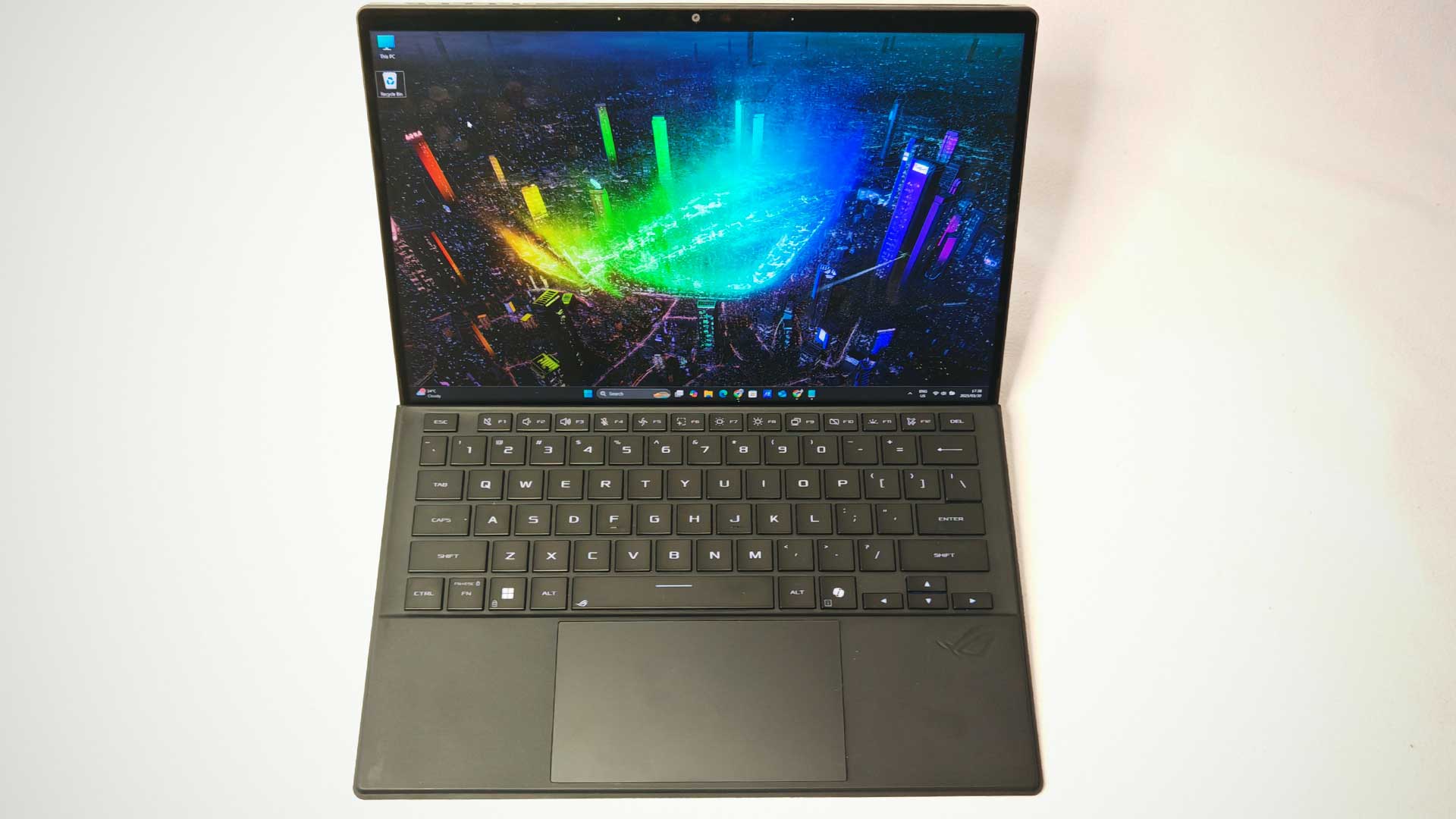
Although relatively small at 13″, the screen on the device still packs a punch. It’s not the immaculate OLED panel found in the Zenbook range, but it delivers excellent quality, especially for designers, creators and even gamers.
The screen has an IPS panel that delivers 500 nits of peak brightness, the base standard on modern laptops. However, its display specifications stand out, thanks to its ROG Nebula Display. This includes a 2.5K resolution, which features touchscreen support and a 180Hz refresh rate. Additional support and certification include 100% coverage of the DCI-P3 colour space and Dolby Vision HDR.
Being a tablet, in part, screen protection is also essential. ASUS uses Corning’s Gorilla Glass 5 protection, which delivers a robust screen with a scratch-resistant finish.
Overall, the ROG Nebula Display delivers great results, with vibrant colours, excellent contrast and a high refresh rate for all gaming needs.
ASUS ROG Flow Z13 (2025) GZ302 Specifications
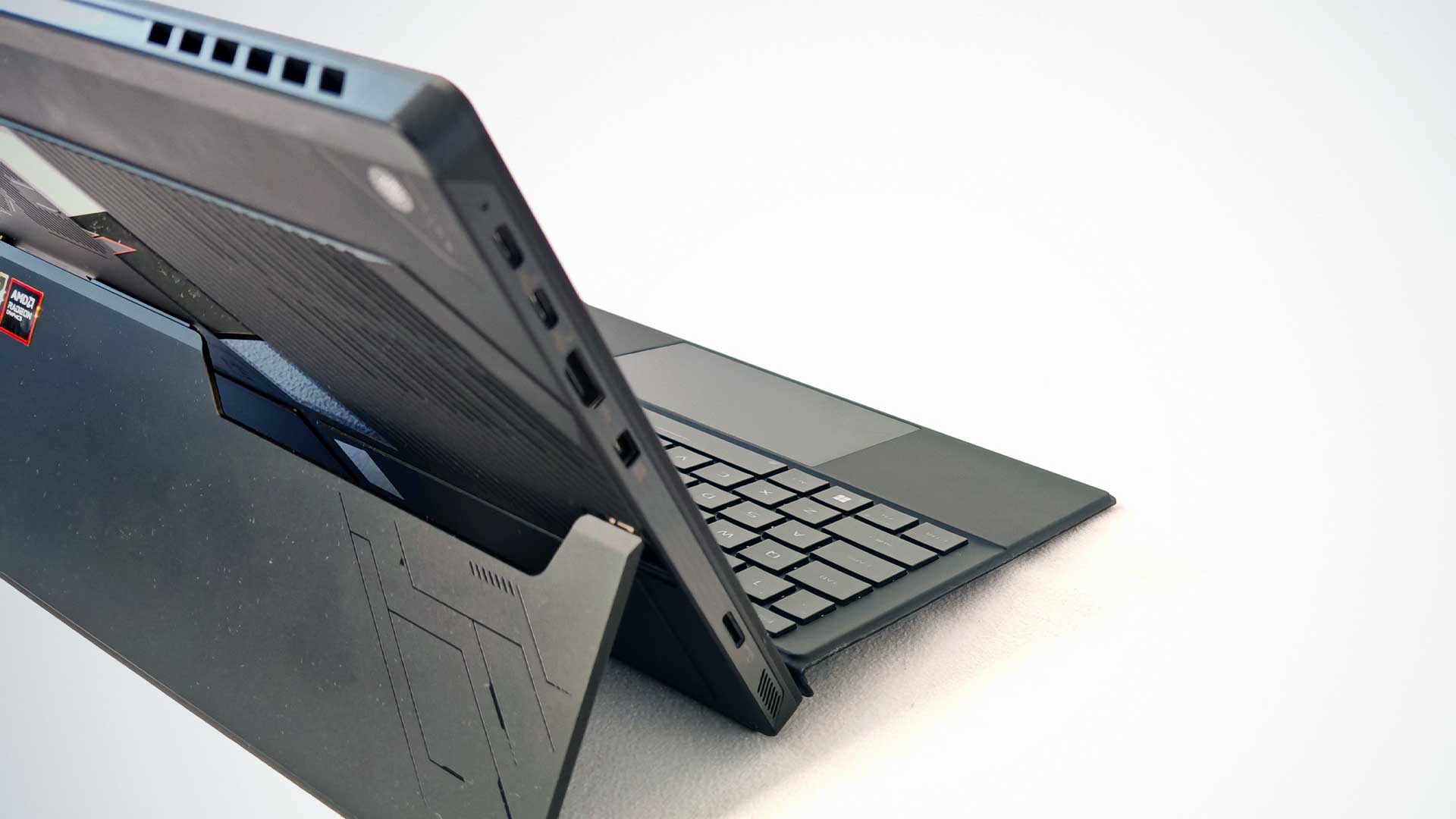
Despite its small frame to align with the tablet form factor, the ROG Flow Z13 is still packed with a great list of hardware.
It includes an AMD Ryzen™ AI Max+ 395 3.0GHz CPU (16 high-performance Zen 5 CPU cores) and the AMD XDNA NPU up to 50 TOPS. It also features a Radeon 8060S GPU (RDNA 3.5 GPU cores) for gamers. Additionally, it includes up to 128GB of ultra-high speed LPDDR5X 8000MHz RAM (32GB on the model I reviewed), along with 1TB PCIe 4.0 NVMe M.2 SSD (2230).
It has an impressive 13MP camera and 5MP IR camera for your video requirements, much higher than the average laptop that typically features a simple “HD webcam” – usually only 720p. It includes Wi-Fi 7(802.11be) and a Bluetooth 5.4 wireless card for connectivity.
ASUS has packed a decent-sized battery under the hood of the Z13. Its 70Wh battery with Strix Halo processor (4S1P, 4-cell Li-ion) should deliver superb performance even when not plugged in.
Performance and Battery Life
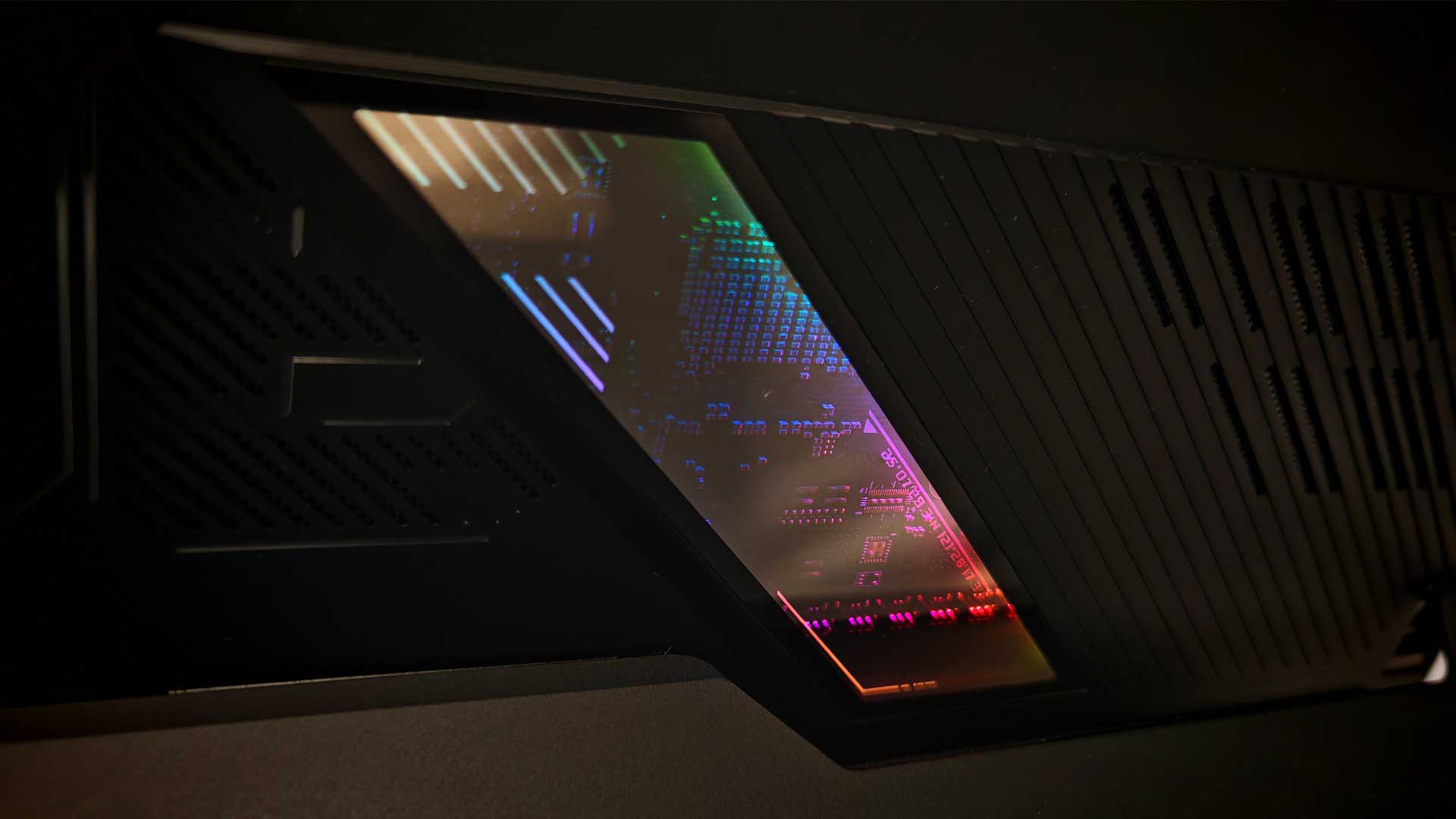
Most of the high-end laptops from the major brands packing the best-in-class hardware aren’t going to have any difficulty performing the basic tasks. Even when upping the ante with multiple tabs, high-intensity multitasking, and constantly switching between apps, nothing should phase your overall experience. The ASUS ROG Flow Z13 breezes through all these tasks with ease.
What’s impressive about the Flow Z13 is its quiet operation, even under load. In its press release, ASUS confirms a switch to a lightweight stainless steel and copper configuration of the internal heatsinks. It is said to cover more coverage across the components and improve heat dissipation. As a result, the operational temperatures are kept relatively low, and barely any noise is produced. You will hear the fans engage when you’re gaming or under a similar load, but it still doesn’t register as “noise” without thinking about it.
Keeping the temperatures low also increases the battery’s efficiency, which impacts performance. The Ryzen AI Max CPU also adds to performance gains with less battery-hungry requirements. For the gamers, this equates to roughly 90 minutes of game time. Alternatively, this is about seven to eight hours of uptime. ASUS states that you can get up to 10 hours of usage for the general office worker, but I had to switch to Windows’ Energy Saver mode to get close to these times. That’s still impressive for most users.
The one aspect of the battery that I find questionable is the size of the charger. Yes, it can deliver 200W input for recharging in next to no time, but it seems overkill for a device that’s effectively a tablet. At 1.2KG for a tablet, adding 700g to your backpack is a lot. However, the great thing about having a Type-C USB port for recharging up to 100W is that you don’t always need to carry the large charger on the road.
As for the gamers, the overall performance is good. It’s not going to deliver 4K resolution graphics on Ultra settings at 120Hz for AAA games, but you’ll definitely be able to play all your favourite titles. If you do want to make use of the 180Hz refresh rate, you’ll need to turn down the settings fairly low with a 1080p resolution to get above 100FPS. Anything more and those frames will start to drop off quite drastically. I was able to get a decent 50-60FPS on most titles, and a mix of results switching between 1080p resolution and the 2.5K at the screen’s maximum range. That’s not bad, and as stated, decent for the casual gamer.
Conclusion
Regarding niche laptops like the ASUS ROG Flow Z13, there’s always a question about its justification, both in terms of its utility and price. However, there’s not much to be questioned about wanting a 2-in-1 laptop. These have been around since tablets became more popular over a decade ago. In the case of the Z13, the added benefit of the modern 2-in-1 hybrid is its gaming prowess, which adds a lot more value. There are a few shortcomings here and there, but overall, the unit is decent for gamers and a great companion for creators (who are casual gamers).
The ASUS ROG Flow Z13 (2025) retails at R42,999, a reasonably high price for the average buyer. In some aspects, you could find a similar spec gaming laptop and tablet with some cash still left in your pocket. However, the 2-in-1 aspect makes it a lot more convenient as a central device without juggling between the two, especially when editing content. The Z13 also looks excellent in the process.
RELATED: ASUS Zenbook Duo (2025) UX8406CA Laptop Review – Two Screens, Double the Power
The ROG Flow Z13 (2025) GZ302 is available at the ASUS online shop, Computer Mania, Evetech and Takealot.


